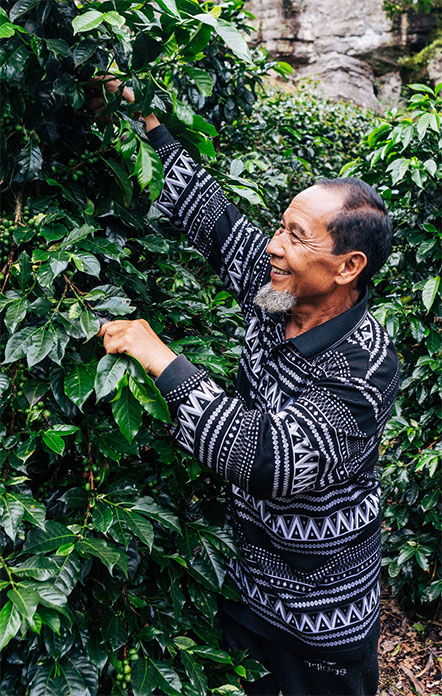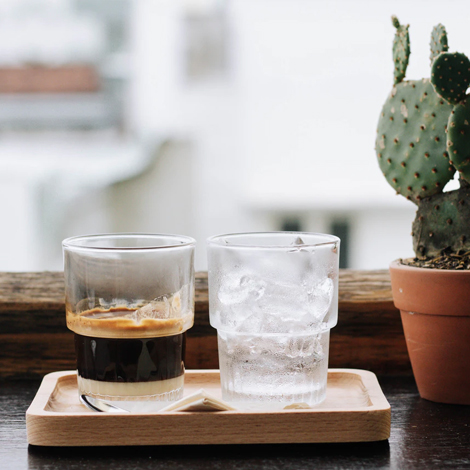Ignored and popular at the same time: feel the magic of Asian Coffee

Although it has a prominent place in many espresso blends, Asian coffee does not seem to have found its place in the heart of coffee lovers.
Although most of us hear the word "coffee" think of Latin America or Africa, Asia is a considerable force in the coffee market. With Vietnam, Indonesia as well as India being among the top ten coffee makers, Asian coffee is widespread, while coffee is also found in other Southeast Asian countries, such as Laos, Thailand, East Timor, and - New Guinea and the Philippines.
Asian coffee hides a special, long-standing history behind it, but most importantly, it hides unique flavors - without which we could not imagine the espresso we love, but coffee in general.
Asia: the first coffee trees outside the Arab Peninsula
Asian coffee is a very, very old affair - in fact, with the exception of Ethiopia,and the Arabian Peninsula, coffee was systematically cultivated for the first time in Asian lands. As early as the 16th century, Dutch colonists managed to break the Arab "ban" and transfer coffee seeds to East Indian colonies, to present-day Indonesia, and more specifically to the island of Java. Belonging to the "coffee belt", Indonesia proved to be ideal for growing coffee, giving a valuable commercial advantage to the Dutch and breaking - for the first time - the Arab coffee monopoly. This is also the beginning of blending, as traders mix the beans from Yemen and Java, making the infamous Moka - Java, the first coffee blend in history.
Due to colonialism, coffee growing rapidly spread to Asia, and even after the former colonies became independent, coffee remained an essential export product for most new states. If there was no catastrophic outbreak of the Coffee Rust fungus in the 19th century, Asia might still have a larger market share, but even today, Vietnam remains the world's largest supplier of Robusta, and Indonesia's production is remarkably high.
 How does Asian Coffees taste like?
How does Asian Coffees taste like?
As we know, the taste of coffee depends on a number of factors, such as its variety, its cultivation conditions, its processing, its altitude, etc. However, we can summarize the characteristics of Asian coffee as well as the beans that come from it. Asia has some commonalities even though they come from different countries, but at the same time they are very different from African or Latin American coffee.
Asian Arabica is strong, intense, and produces cups with a heavy body and strong taste. Its aromatic bouquet is earthy, with aromas of wood, spices, tobacco. The acidity is usually low, the characteristic coffee bitterness is more pronounced, while the complex aromas of Arabica found in coffee from South America or Africa are lacking. Used in blends, Asian coffee improves the body, balances coffee with strong acidity and offers spicy notes reminiscent of spices or nuts.
Of course, the above descriptions refer to Asian Arabica. Asia produces lots of Robusta, which of course has many qualitative variations. A large proportion of Vietnamese Robusta is directly intended for instant coffee production, while in Indonesia or India one can find quality Robusta, often available as single origin coffees.
What's the best way to enjoy Asian Coffee?
The local coffee culture, as developed in Asian countries, is remarkably common regardless of country: all Asian people love filter extraction, but they add generous doses of sugar and milk, but often spices, to the coffee maybe related to the strong taste of Asian coffee.
If one wants to enjoy their Asian "traditional" coffee, they may try an Asian recipe, from Vietnam, Thailand or Indonesia. Still, due to its strong body, Asian coffee is ideal for those who love filter coffee but at the same time require strong taste from their cup. It goes without saying that Asian coffee works very well as espresso, especially as a blend ingredient, as it adds special flavors and aromas to the cup and balances the particular aromas of coffee from other continents. In general, espresso extracted from Asian beans is a very good "base" for drinks that require milk, such as cappuccino, o latte or flat white.
 Is it easy to find Asian Coffee in the market?
Is it easy to find Asian Coffee in the market?
Asian coffee is everywhere and most likely you have already tasted it, without even knowing it, as it is an ingredient in many espresso blends. One of Lavazza's most popular blends, Gold Selection, uses Indonesian coffee from Java, which gives the blend its spicy character. For those using the nespresso machine, the compatible Garibaldi capsules with Selezione 1860 blend base their flavor on Arabica coming from Papua New Guinea, and one can also find monotonous choices, such as Cosmai Raja, which consists of 100 % real quality Robusta beans from India.
Most coffee companies mention the origin of their blends on the packaging, so if you want to taste the secrets of Asian coffee, you can simply consult the coffee packaging.
Coffee is a real journey - how else, with a single sip, can one be found from the open plains of Kenya to the Andean slopes and from there to the tropical monsoons of Java?










